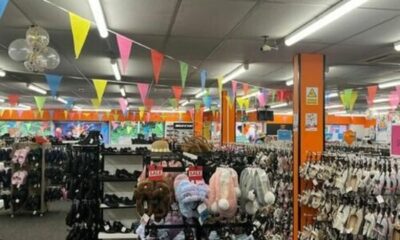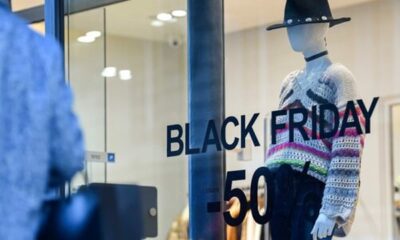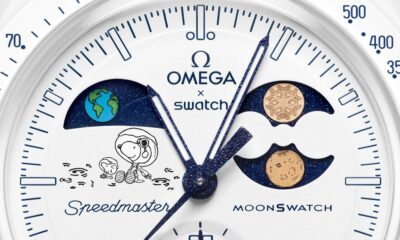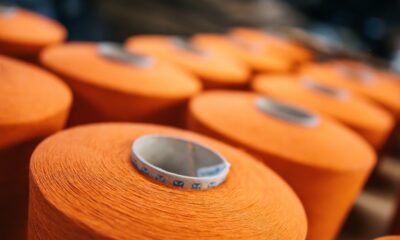Fashion
Bag charms selling for $1,000 are retail’s next little luxury
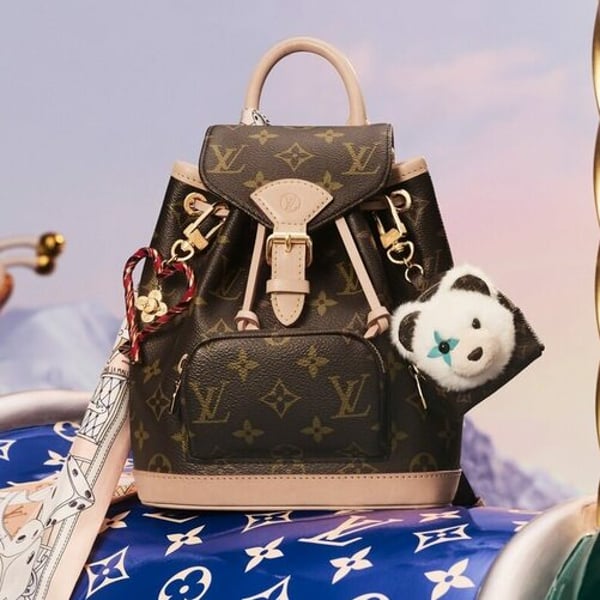
By
Bloomberg
Published
August 14, 2025
Years after Jane Birkin famously decorated her eponymous Hermès handbag with clusters of trinkets and strands of beads, bag charms have made a big comeback.
Plush Labubu keychains helped revive the Gen Z-fuelled accessorise-your-accessory trend and catapulted it into the mainstream. Now charms are showing up on elite fashion runways and dangling from the purses of celebrities.
Designer handbag makers, anxious for growth during a downturn, are especially eager to get in on the phenomenon. If affluent shoppers can’t be persuaded to drop thousands of dollars on a new purse, perhaps they can be enticed to spend a few hundred dollars on a branded charm for a purse they already own.
Ethan Diaz, 24, used to splurge regularly on high-priced purses and streetwear that he would barely use. Now, bag charms enable him to quickly switch up the look of his purses without blowing his budget. He recently dressed up his $695 Coach Soft Empire Carryall Bag with a handful of eclectic charms, including a $120 Longchamp keyring in the shape of a croissant.
The commercial director from New Jersey began buying the embellishments a year ago and now owns 30, the most expensive being a $1,010 Louis Vuitton crab charm that doubles as a small pouch. “You can mix and match and put it on different bags, so you’re not limited to one specific style,” Diaz said.
Sales at luxury brands have been falling for several quarters, and companies are putting out more affordable and smaller accessories to reverse the slump and drive up store traffic.
Last month LVMH Moët Hennessy Louis Vuitton SE reported that second-quarter sales fell 9% in its key fashion and leather goods unit as shoppers reined in purchases of costly purses and clothing. Rival Kering reported that Gucci sales plunged 25% during the same period compared with a year earlier, while sales at Prada declined 3.6%.
Shares in the companies are all down double digits in the last 12 months, and consultancy Bain & Co. expects the personal luxury goods industry to shrink between 2% and 5% this year. That would be the worst performance since the 2009 global financial crisis if the pandemic is excluded.
Tapping into the viral bag charm craze is “sensibly opportunistic” for luxury companies that might as well “make some money off the back of it,” said Neil Saunders, managing director at analytics firm GlobalData.
Tapestry Inc., which has been outperforming top-tier labels thanks to strong sales at its attainable luxury brand Coach, has expanded its assortment of charms there and at Kate Spade. The company plans to significantly increase the number of pieces offered at Kate Spade, where sales have been falling, during the holiday season.
Unique bag charms provide “an accessible way in” to the two brands, said Alice Yu, Tapestry’s vice president of strategy and consumer insights.
Ultra-luxury brands have sold charms for years, but mainly as afterthoughts to big-ticket items. Many sold them online only. Now the charms are front and centre in boutiques and at fashion shows.
“If we don’t get into this and lean into this, someone else will,” Saunders said of the prestige brands. And as some of their wealthy customers hold off on buying new purses and clothes, hooking them with a stylish bag charm helps maintain valuable client connections during a rough patch. “The worst thing for a brand is to lose a consumer completely,” he said.
During recent visits to Bloomingdale’s stores, statement charms were featured throughout the handbags departments. At the retailer’s Manhattan flagship, Prada was showcasing its $825 black and gold robot charm attached to a $2,300 backpack. In Los Angeles, Gucci’s $510 dragonfly-shaped keychain was clipped to one of the handles of a $1,950 handbag, and three dog-shaped charms, $450 each, were lined up in a display case alongside monogram card holders and wallets.
Although bag charms are booming, industry analysts caution that they can only bolster luxury brands to a point.
Ultimately, charms “will make up a very small portion” in sales for premium fashion labels, said Bloomberg Intelligence analyst Deborah Aitken. “Enough to keep brands active in the minds of potential shoppers, but at very limited total value.”
Louis Vuitton and Loewe declined to comment on their bag charm strategies or provide sales figures. Gucci and Fendi did not respond to requests for comment.
Klevisa Hendrix, a 27-year-old content creator from Los Angeles, began buying bag charms this year after seeing them on the Coach runway and now has a dozen in her growing collection. She typically spends less than $100 on a single charm. “You want to be fashionable,” she said, “but you want to still be able to afford fashion.”
Fashion
Modella eyeing another acquisition, this time it’s the Wynsors footwear chain
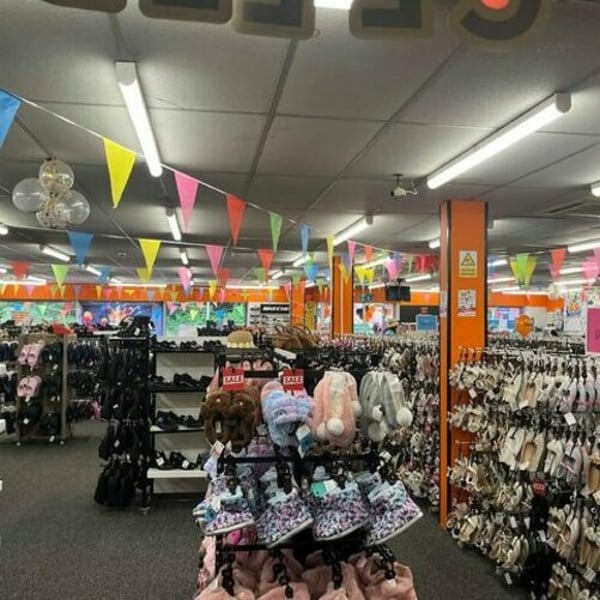
Published
December 1, 2025
Modella Capital is fast becoming one of the most acquisitive businesses on the UK high street and the latest retailer in its sights is footwear chain Wynsors World of Shoes.
That’s according to Sky News, which said the investment firm is targeting a takeover of the privately owned footwear retailer and is currently in “advanced talks”.
Wynsors trades from around 50 standalone shops across the north of England and Modella is now “the likeliest buyer” of the business, with expectations of a deal before the end of the year.
Modella was recently in the news as the buyer of Claire’s UK business. It also recently bought the non-travel locations of WH Smith (now renamed TG Jones) and owns Hobbycraft and The Original Factory Shop too. It had earlier hoped to add Poundland to its portfolio but missed out on that one.
Wynsors has been looking to sell for around two months and accountancy firm RSM had been hired explore interest from prospective bidders, Sky News said.
The chain trades from around 50 standalone stores and 40 concessions. It sells brands including Adidas, Skechers, Hush Puppies, Clarks, Nike, kickers and more. And although its sells footwear for women, men and children, it focuses particularly on school shoes.
Copyright © 2025 FashionNetwork.com All rights reserved.
Fashion
Results are in: US Black Friday store visits down, e-visits up, apparel shines
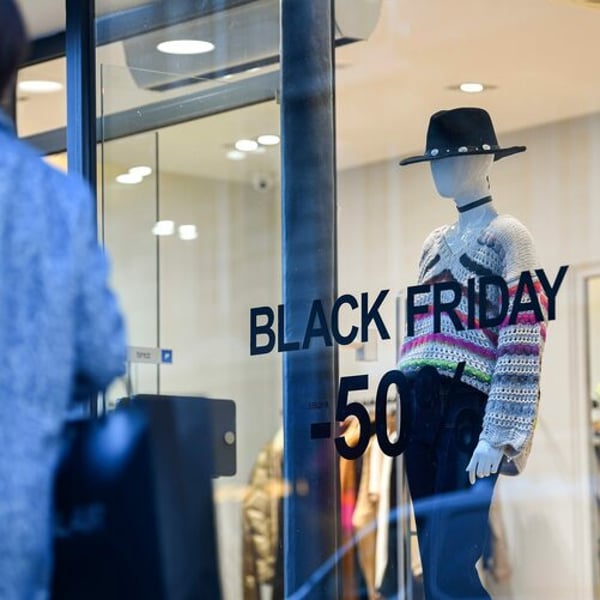
Published
December 1, 2025
US Black Friday retail sales rose 4.1%, Mastercard SpendingPulse has revealed. But while online surged, in-store visitor traffic was down a separate report from RetailNext showed. That said, both reports showed a better result for apparel than for other sectors.
First, the Mastercard numbers. They exclude autos and are based on the payment cards giant measuring in-store and online retail sales across all payment types.
The company said this year’s event “tells a story of comfort, connection, and savvy shopping” as consumers prepared for meaningful moments with family and friends.
Spending growth on apparel was particularly strong both online and in-store, “suggesting shoppers refreshed wardrobes while leaning into value-driven choices and convenience”.
In fact, apparel climbed 5.7% (online 6.1%, in-store 5.4%), as “chilly temperatures and seasonal deals encouraged spending on new fashions”. Jewelry also rose 2.75% (online 4.2%), “as consumers opted for gifts that shine”.
Overall, e-commerce retail sales excluding autos jumped 10.4%, “as shoppers increasingly value speed and convenience”. In-store sales grew more modestly (1.7%) but “remain essential to consumers for tactile experiences”.
Mastercard also said the surge in online shopping “showcases how technology is transforming the way consumers pay. Shoppers are enjoying seamless checkout experiences across devices, from smartphones to connected home assistants, making holiday shopping faster, safer, and more intuitive than ever before”.
Which leads us on the that drop for in-store shopping traffic. RetailNext said initial data reveals an average of a 5.3% year-over-year decrease for foot traffic across Black Friday and Saturday.
Visitor numbers dropped 3.6% on Friday itself and a massive 8.6% on Saturday. By store type, apparel stores saw traffic down 2.3% across the two days with just a 0.7% drop on Friday and 5.3% on Saturday.
For footwear, the weekend, Friday and Saturday falls were 6%, 6% and 5.9%, respectively. For healthy & beauty they were drops of 4.7%, 2.1% and 9.6%, and for jewelry they were 3.6%, 2% and 6.6%.
“Black Friday 2025 didn’t kill the holiday; it changed how shoppers approached it,” said Joe Shasteen, Global Head of Advanced Analytics at RetailNext. “Foot traffic was down on Friday and on Saturday, but that wasn’t disinterest, it was intention. Shoppers showed they’re done with the impulse-driven, one-day frenzy. Prices, tariffs, and tighter budgets pushed people to shop with discipline, not adrenaline, and they responded by turning Black Friday into a value calculation”.
RetailNext said one of the clearest signals is the 3.6% drop on Black Friday, which was meaningfully better than the 6.2% decline seen from Sunday through Wednesday (23 November to 26 November). It shows that even in a cautious year, “shoppers are still willing to attend major promotional events; they’re simply being more selective about when those events are worth the trip”.
“Despite the declines, Black Friday again delivered the highest in-store traffic of any day this year, reaffirming its role as the anchor of the holiday shopping season, but the weekend’s performance was shaped more by real-world factors than waning interest,” added Shasteen. “Consumers are still willing to shop, they’re just demanding proof it’s worth leaving the house. Retailers who treated November as a month-long build, rather than a single-day spectacle, saw the strongest in-store performance.”
Copyright © 2025 FashionNetwork.com All rights reserved.
Fashion
ITA to continue till Advanced Framework Agreement ratified: EU, Chile
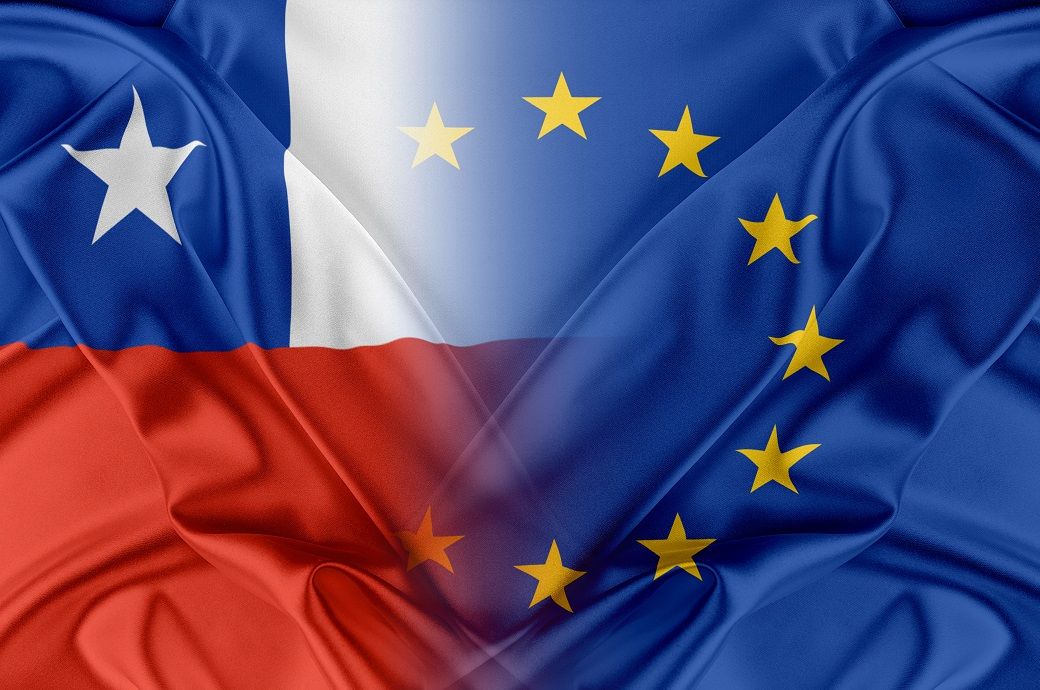
A review of the trade and sustainable development provisions of the ITA is under way.
EU high representative for foreign affairs and security policy Kaja Kallas recently met Chilean Minister of Foreign Affairs Alberto van Klaveren. Both co-chaired the first EU-Chile Joint Council under the Advanced Framework Agreement in Brussels.
The EU and Chile are committed to deepening their trade and investment relations under the Interim Trade Agreement, which came into force on February 1 and will remain in force until the new Advanced Framework Agreement has been fully ratified.
Both sides will continue to cooperate on ensuring reliable and sustainable supply chains, including through diversification and support to strategic investments.
The first EU-Chile Trade Council meeting was held under the new ITA, according to an EU release.
The EU is Chile’s third-largest trade partner and the top source of foreign direct investment (FDI).
Both sides will continue to cooperate on ensuring reliable and sustainable supply chains, including through diversification and support to strategic investments, a joint statement issued said.
Chile welcomed the interest of the EU in establishing a dialogue with the member countries of the Comprehensive and Progressive Agreement for Trans-Pacific Partnership (CPTPP). Both parties affirm their ambition to translate this dialogue into a shared agenda.
Both sides remain committed to ensuring the effective implementation of the Advanced Framework Agreement, and to achieving its full ratification.
The provisional application of the EU-Chile Advanced Framework Agreement began on June 1, 2025.
Fibre2Fashion News Desk (DS)
-

 Sports1 week ago
Sports1 week agoWATCH: Ronaldo scores spectacular bicycle kick
-

 Entertainment1 week ago
Entertainment1 week agoWelcome to Derry’ episode 5 delivers shocking twist
-

 Politics1 week ago
Politics1 week agoWashington and Kyiv Stress Any Peace Deal Must Fully Respect Ukraine’s Sovereignty
-

 Business1 week ago
Business1 week agoKey economic data and trends that will shape Rachel Reeves’ Budget
-

 Tech6 days ago
Tech6 days agoWake Up—the Best Black Friday Mattress Sales Are Here
-

 Politics1 week ago
Politics1 week ago53,000 Sikhs vote in Ottawa Khalistan Referendum amid Carney-Modi trade talks scrutiny
-

 Fashion1 week ago
Fashion1 week agoCanada’s Lululemon unveils team Canada kit for Milano Cortina 2026
-

 Tech6 days ago
Tech6 days agoThe Alienware Aurora Gaming Desktop Punches Above Its Weight


